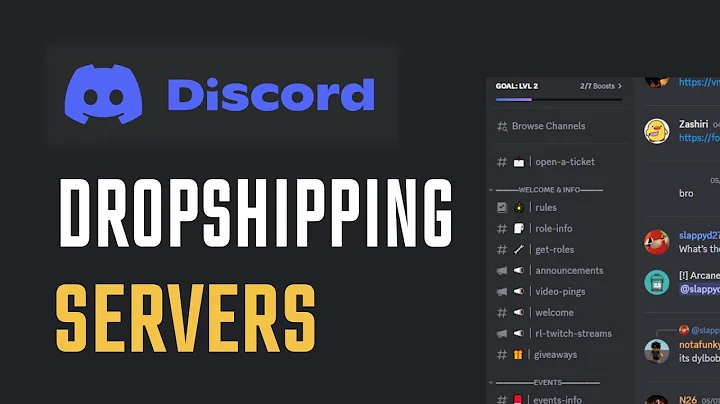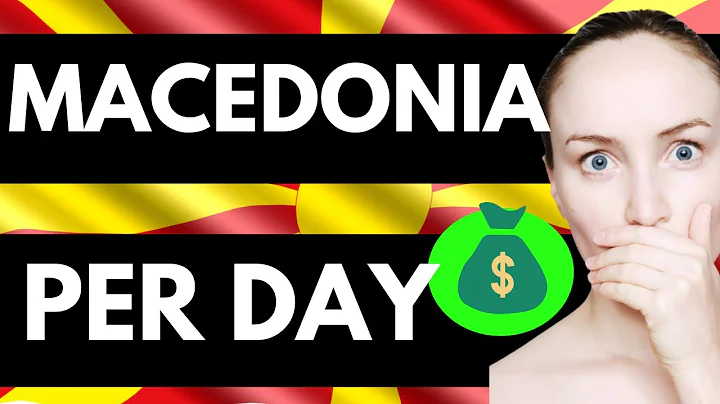From Loss to Success: My Dropshipping Journey in Europe
Table of Contents
- Introduction
- The Default dropshipping Blueprint
- The Challenges with the Default Blueprint
- Trying Dropshipping in Europe
- Translating and Adapting the Website
- Setting up a TikTok Account
- Creating TikTok Videos
- Running an Ad Campaign in Israel
- The First Sale and the Feeling of Success
- Scaling Up with More TikTok Videos
- Shipping Challenges and the Use of a Dropshipping Agent
- Dealing with Abandoned Checkouts
- Going Viral with a Popular Video
- Managing Comments and Competition
- Lessons Learned
Dropshipping Success: How I Made Money in the European Market
Introduction
Six months ago, I embarked on my first dropshipping venture and faced multiple setbacks and financial losses. Despite following the default dropshipping blueprint, I struggled to generate sales and began to doubt the viability of dropshipping. However, fueled by determination, I decided to give it one more try, this time targeting the European market. In this article, I will share my experiences, strategies, and the lessons I learned during my journey to dropshipping success.
The Default Dropshipping Blueprint and its Challenges
The default dropshipping blueprint involves finding a product, building a website, and running targeted ads on platforms such as Facebook. However, I discovered that this model did not yield the desired results for me. The US market, often targeted for dropshipping, proved difficult to penetrate due to account restrictions and limited organic reach on TikTok for someone living in Europe. It became apparent that I needed to explore alternative approaches.
Trying Dropshipping in Europe
Recognizing the advantage of reduced competition and the potential for organic reach, I decided to shift my focus to the European market. Israel, in particular, caught my attention as a target market due to its lower competition and the possibility of utilizing TikTok's organic features. With minimal delay, I visited BP ads and randomly selected a product that was already performing well.
Translating and Adapting the Website
As a non-Hebrew speaker, translating and adapting the hundreds of words on my website presented a significant challenge. Fortunately, Shopify had recently released a translate and adapt app, allowing me to manually translate specific sections. However, I was cautious of relying solely on Google Translate, as grammatical errors in product descriptions could deter potential customers. To ensure accuracy, I employed a professional translator on Fiverr to translate the entire product description, while using Google Translate for the remaining website content.
Setting up a TikTok Account and Creating Videos
With my website ready, I proceeded to set up a TikTok account dedicated to my dropshipping business. As organic reach was my primary strategy, I initially purchased 1000 followers to gain access to certain features. Creating TikToks in Hebrew posed a challenge, but I overcame this by generating English videos, translating them using Google Translate, and using a text-to-speech generator to add Hebrew audio. After editing the videos on my PC, I transferred them to my phone for posting.
Running an Ad Campaign in Israel
To assess the effectiveness of running an ad campaign in Israel, I allocated a $100 budget to my TikTok ads. Surprisingly, the campaign proved highly cost-efficient, with clicks costing significantly less compared to my previous US campaigns. This encouraged me to pause the ads temporarily to review my overall ad strategy and evaluate the results.
The First Sale and the Feeling of Success
Despite temporarily halting the ad campaign, I received my first sale, which occurred while I was out with my family. Experiencing the joy and pride of making money without actively promoting my products was a turning point. With this tangible evidence of success, doubts and excuses were eliminated, and I became even more motivated to drive further sales.
Scaling Up with More TikTok Videos
With renewed confidence, I intensified my TikTok efforts. Following Tate's advice, I posted more daily TikToks and adopted a consistent content creation routine. As a result, my videos gained traction, leading to additional sales and reinforcing my belief in the potential of dropshipping.
Shipping Challenges and the Use of a Dropshipping Agent
As I experienced an increase in orders, I realized the need for an efficient shipping solution. Initially, I relied on CJ Dropshipping but discovered their prices to be unreasonably high, affecting my profit margin. After watching a video by Bad Business, I learned about dropshipping agents in China who negotiate lower prices with manufacturers. Intrigued by this option, I contacted sellers on Alibaba, ultimately securing a $6.2 product price and 7-15 days shipping time.
Dealing with Abandoned Checkouts
During the course of my business, I encountered customers who initiated checkouts but failed to complete their purchase. Concerned about this trend, I contacted my e-commerce service provider, who assured me that everything was functioning correctly. Strangely, after this conversation, customers began purchasing again. While I cannot determine causation, it highlighted the importance of regular communication and troubleshooting with service providers.
Going Viral with a Popular Video
One transformative moment in my journey was when a particular video went viral. By recreating a viral concept in the US, I garnered significant attention and generated multiple sales. Understanding the importance of viewer retention, I utilized techniques such as teasing and suspense to captivate audiences. This success motivated me to duplicate the video's concept, resulting in additional viral TikToks and subsequent sales.
Managing Comments and Competition
As my videos gained popularity, I noticed an increasing number of comments pointing out that similar products were available on chain stores and AliExpress at lower prices. Acknowledging the importance of effective marketing, I navigated these comments by either addressing them directly or deleting them. However, it became evident that market saturation and irrelevance were challenges to overcome. Understanding the role of marketing differentiation became crucial in maintaining a competitive edge.
Lessons Learned
Through my dropshipping journey, I learned several valuable lessons. Firstly, the default dropshipping blueprint may not work for everyone, and it is essential to adapt strategies based on market conditions and personal circumstances. Secondly, exploring alternative markets can lead to untapped opportunities and reduced competition. Thirdly, accurate translation and adaptation of website content are crucial for establishing trust with customers. Fourthly, TikTok can be a powerful platform for organic reach, especially when applied consistently and creatively. Finally, maintaining effective communication with service providers and continuously refining marketing tactics are vital for sustained success in dropshipping.
Highlights:
- Exploring the challenges of the default dropshipping blueprint
- Shifting focus to the European market for reduced competition and organic reach
- Overcoming language barriers with translation and adaptation tools
- Utilizing TikTok for organic reach and creative content creation
- Running cost-efficient ad campaigns in the European market
- Experiencing the joy and pride of the first sale
- Scaling up TikTok efforts for increased sales
- Finding cost-effective shipping solutions through dropshipping agents
- Addressing abandoned checkouts and maintaining customer satisfaction
- Going viral with captivating TikTok videos
- Managing competition and market saturation through marketing differentiation
- Key lessons learned for dropshipping success



















